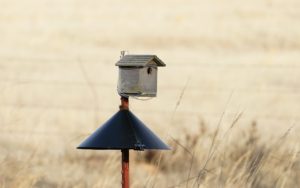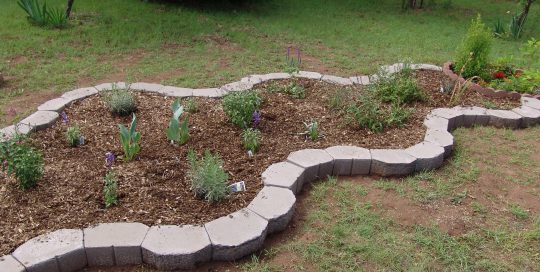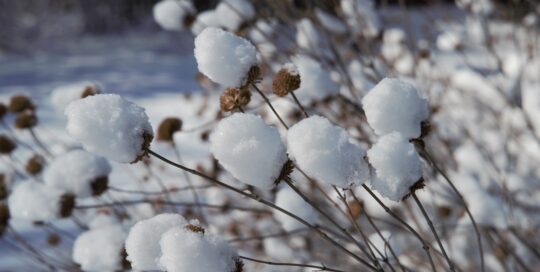Do This to Protect Your Bluebird Houses from Predators
Views: 5220

I’d planned to write about protecting your bluebird houses from predators this month, but it’s a hard thing to do right now. I’ve managed to survive the past year in relatively good health, both mentally and physically. I’ve been working from home, and I love it. Being an extreme introvert makes social distancing a comfortable thing. But then the winter storm hit. Temperatures plunged into artic lows, and I despaired thinking about all the plants I could be losing and all the birds I know I lost.
My spouse and I were determined to save our wildlife. We fed multiple times a day, first putting food on top of the ice, then on top of the snow, then on top of more and more snow. Despite our efforts, every day there were fewer and fewer finches in my trees. We put out 600 pounds of bird food in under two weeks. At one point, I think we were feeding every blackbird in our county. We had hundreds.
The cold is gone now, and happily we have many survivors, including all those blackbirds. But I’m afraid our bluebirds didn’t make it. Thus the difficulty in writing this blog. I doubt my bluebird houses will be used this year.
Why protect a bird house?
One year, we lost our baby bluebirds to a predator. We didn’t see it happen, but some disaster happened while we weren’t looking. The potential culprits are many: snakes, raccoons, opossums, or squirrels could have done it. But, most likely it was one of our gigantic rat snakes. (They probably got to be gigantic by raiding many nests.) We caught one in the act last year, stretching into the phoebe nest above our door. Predators have to eat, too. But be aware that nest boxes don’t protect a nest against predators.
How can I protect my bird house?
A bluebird researcher at Oklahoma State University taught me a fairly foolproof method for protecting a bluebird house. Find an open area in a sunny spot, away from busy birdfeeders and trees or plants that a predator could use to access the nest box. Face the entrance toward an open area, preferably facing east, although this isn’t a strict necessity.
My researcher attached her bird houses to a studded t-post, driving the post so that the top was about 5′ off the ground. She then used aluminum wire to attach the house to the post.
To keep the predators out, attach an 18 inch squirrel baffle below the bird house. I use a Woodlink NABAF 18 inch Audubon wrap-around squirrel baffle. It will fit tightly around the t-post if you warp it just right. (It may be easier to do this with two people.) I place a sturdy binder clip to keep it from coming apart again. Once it is latched and clipped, fill in any gaps between the baffle and the t-post with steel wool to prevent a snake from squeezing its way up the post.
There are other methods and products you can use to accomplish the same thing, so this isn’t the only way to protect your bird boxes. But it’s a good idea to add some kind of protection if you can.
I thank you for doing so. We need lots of baby bluebirds this spring to replace the beauties we lost during this terrible storm.
Meet Leslie Miller
Leslie Ann Miller shares 3.5 acres in rural Oklahoma with birds, butterflies and wide variety of animals. She is currently transforming her yard with plantings…
Leslie's Recent Posts

Firescaping 101






